On April 15th much of the personal Star Trek collection of visual effects producer and supervisor Dan Curry is going up for auction as part of the Heritage Entertainment & Music Memorabilia Signature Auction taking place in Dallas, TX. TrekMovie had a chance to talk to the multi-Emmy winning Trek vet about the auction and his time working on four Star Trek TV series.
Making Star Trek history
You are one of just a handful of people who were with Star Trek for the 18 years between the first season of TNG and last season of Enterprise. Do you see that period as a single continuum, or were there specific eras or seasons that were particularly rewarding for your work?
I would say it was a continuous flow. It was like watching a movie from the beginning to the end in some ways. There were high points and low points, like with everything. There are always things you wish you had more time to do in a different way. With TV it is different than movies, where you have a long time to do revisions, with TV your first idea is the one that goes because you don’t have time to change it.
Can you offer some examples of those high points?
I am proud of the title sequences for Voyager and Enterprise. I am proud of the bat’leth and the Klingon martial arts style [Mok’bara]. There are certain standout episodes, like “Yesterday’s Enterprise” and “The Inner Light.” The finale of all the shows were pretty good and I am especially proud of the pilot for Star Trek: Enterprise. That was a major achievement in special effects and working with a great director, James Conway.
And what about some of those things you wish you had more time for another go?
Oh yeah. Well, we were doing stuff in standard def in Next Generation and I was unhappy with certain diagonal camera moves in the space shots, because you can see the stars jump from scan line to scan line. I remember Douglas Trumbull – the great visual effects supervisor of 2001 and Blade Runner – he was doing experiments with 60 frames per second film. So, I realized that there was a video feel that were basically 2 frames that refresh themselves for every video frame. So, I thought if I shot the stars at 60 frames per second, it would clean up that bouncing from scan line to scan line. And it certainly did that, but when you see it cut into the show, it was just startlingly different in terms of clarity from the surrounding live action shots. I did the same thing with the macro viruses in the Voyager episode [“Macrocosm”], trying to get them to move as smoothly as possible, and it just didn’t fit with the rest of the footage. That was an error, I have regretted ever since. I was trying to do something good, but it didn’t work well.
Moving from analog to digital age
The two decades you were working on Star Trek saw a lot of changes in visual effects.
That is correct. When we started Next Generation, Paramount made a truly courageous decision that they would accept the final product as a video entity as opposed to having a film negative. The reason for that is that video compositing was just getting started and we were using 1-inch analog compositing, but we still shot everything on film. We were doing the matte paintings in oils, and shooting physical miniatures, but the compositing was done [on video tape].
So, when we would shoot an Enterprise shot, we would shoot a minimum of seven passes. In order for the windows and the warp drive and the deflector and the running lights and the ship and the matte to all register accurately, a pin-registered film transferred [to video tape] was required. But, 1-inch analog compositing had a drawback, as each generation would suffer in an image quality loss. So, we would endeavor to find ways to minimize the number of generations required, because one got a little bit fuzzier than the previous one. And when D5 format came along [in 1994], that took that problem away, because being a truly digital format, you could duplicate and duplicate, while maintaining the same quality as the original.
The use of computer generated effects also started early on?
We got a little into CG with Next Generation, like with “The Galaxy’s Child” space creature’s baby was CG because we wanted it to be able to move around cutely, while the mother was a physical model. The Crystalline Entity was early CG. I think I did my first digital painting, using a Paintbox on “Q, Who,” where they wanted to use a shot of Riker for a beam in, but we never shot the empty plate. We were in a hurry so I thought “Let me try this Paintbox.” So, I painted out Riker and created a clean background using that. “Inner Light” was the first full digital Paintbox shot that I did. They were not common at the time.
When we got to Deep Space Nine of course we had Odo, and that had to be CG. And the space battles in DS9 were huge, so we didn’t have time to shoot physical models to satisfy the all the demands of the show. We started using CG for the background ships, and the foreground hero ships were physical models. And of course, the wormhole was a CG effect.
So, when we got into Voyager, we did hybrid shots. There are even a couple of CG moments in the main title sequence, but it is mostly physical models and physical paintings. The first fully CG show was Enterprise. By that time the image quality of CG reached a high level and it allowed us to not have the same limitations as physical models, which could only move as far as the track would allow. For example, you couldn’t shoot the bottom of the ship and the top, because you needed something to hold the model up.
As CG was evolving, was there a push to get it used in the show, or more reluctance to move away from the practical?
Early on there was a reluctance, because CG didn’t look that good. That’s why we only used it in the background with physical ships in the foreground. But as CG image quality started getting better and better, it became obvious this was a more efficient way to deliver shots, especially with multiple ships in the same shot.
So, there was never any push from above wanting to save money by moving to CG earlier?
No, not at all. I never heard such a thing.
Maintaining the Star Trek style
Even before your time, Star Trek had established its own sort of style of how it handled space effects, with ships moving in a slow, more naval style, unlike the fast and frenetic dog-fight style seen in Star Wars or other sci-fi. Was this style something you felt was important to maintain a Star Trek feel with all the shows?
I think it was important. We would sometimes would fight to “break the glass table.” But, we felt that story was king and we wanted to make sure that what’s going in the shot looks like it was photographed by real cameramen. We avoided shots where there was no way a real camera could do the shot, like with some of the really frenetic camera moves. It’s so audiences would feel more comfortable and it was an homage to the great visual effects pioneers who did The Original Series like Howard A. Anderson, and those people.
We tried to break that whenever possible, but we also had to satisfy the producer’s vision of what worked for the show. I remember doing the finale of The Next Generation and there was a shot that everybody thought I was nuts, where Riker’s Enterprise comes and saves the day and it flies vertically through the cluster of other ships. And that was a biggie at the time.
Making the Bat’leth
You designed the original bat’leth which is one of the most iconic weapons in Star Trek. Can you give a little insight into how you developed it?
Even as a boy, I always hated movie weapons that were designed to look cool, but were clearly ridiculous ergonomically. I have worked on movies like that and I think “Really? Have you ever handled a sword?” So, when an episode came along where Worf was to inherit a primordial Klingon bladed weapon [“Reunion”], they were considering something that looked like a pirate’s cutlass with an extra blade sticking up like the bill of a toucan. I looked at it and thought “This? No.”
I had imagined what became the bat’leth, but never had a reason to make one. So, I made one out of foam core and went to [Star Trek: The Next Generation executive producer] Rick Berman and said “Hey, instead of this cutlass, which we had seen ad nauseam, how about something new and original, but is ergonomically sound?” I had made up some moves for it inspired by Tai Chi sword movements and Rick said “OK.”
Then, when I showed it to [stunt coordinator] Dennis Madalone. At first, he was skeptical, but he soon became a believer. Dennis and [stunt double] Tommy Morga became fanatics about it. I got to work with Michael Dorn and Armin Shimerman and some of the other people that used them. It was originally inspired by a very small weapon – the Chinese fighting crescent – and I figured, make that big and use staff moves. I wanted something that could grapple and that is why there is an inner blade and an outer blade. I also wanted something that could move fluidly, and you could throw like a lumberjack axe. You could spin it behind your back. You could use it like a saber. And it has that extra blade which acts as a fulcrum. So, if you nail somebody under their sternum, you can use the upper blade as a fulcrum to do a levered tear up and out and create a devastating climax to somebody’s biological existence.
In addition to designing some props, you got a chance to do some other different jobs on the show. What was your favorite job that wasn’t your regular job. Was it directing an episode?
I did like that and wish my time and schedule allowed for more. When I did that I would go offline [from the regular job of visual effects], and they were not happy to have me offline for so long. I really liked directing second unit because it would be a lot of the difficult technical shots and then I would do pickups or reshoots. But the technical shots are things that could take half a day or more to do a single shot. There was no way you could do that during regular production.
Auctioning his Trek history
With regards to the auction, are you selling part of, or your entire personal collection?
Part of it. The reason we are selling it is because my wife and I have decided to downsize and become more mobile and realized that your physical possessions can become anchors. We just want to have less stuff in our lives and make sure we put these items into the hand of people that would understand their historical significance and appreciate them as the works of art that they are.
Is there anything in the auction that is particularly hard for you to see go?
There are a couple of things, like the Echo Popa for example. But, you just have to decide, do you want to own your stuff or your stuff to own you?
How is it you were able to keep these items? Were you able to keep some items as you were making them, or after the series ended?
They were things that I would save from the dumpster that would be tossed away. Some things that didn’t have any value to the studio, but were too cool to throw away. Or, in the case of the Sword of Kahless, I was helping with the Star Trek: Experience in Las Vegas and my payment for doing that was Gil Hibben – one of the greatest knife makers – made one Sword of Kahless for the exhibit and another for me.
Pick up a piece of Trek history
There are a total of 37 lots available from Dan Curry’s collection, now up for auction. Each item will come with special documentation written by Curry providing the new owner with inside information about how the specific item was made and used on the show.
You can see example of the notes for the Echo Popa below.
Online bidding for the Dan Curry Collection is already open. Visit the Heritage site to view all the lots or click this link to see just the Dan Curry Collection.

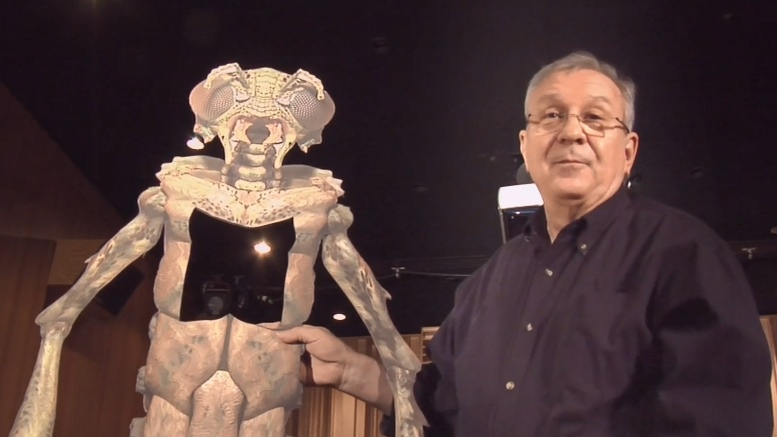

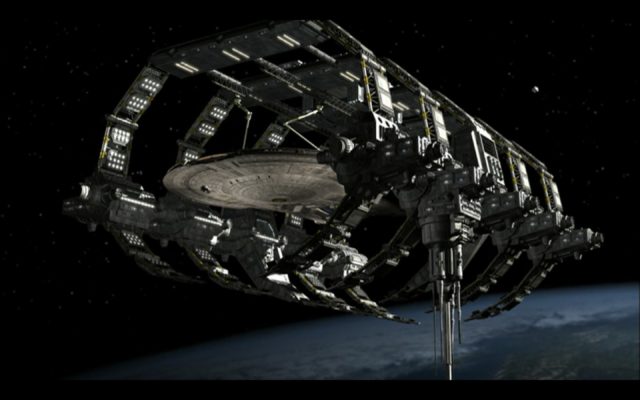


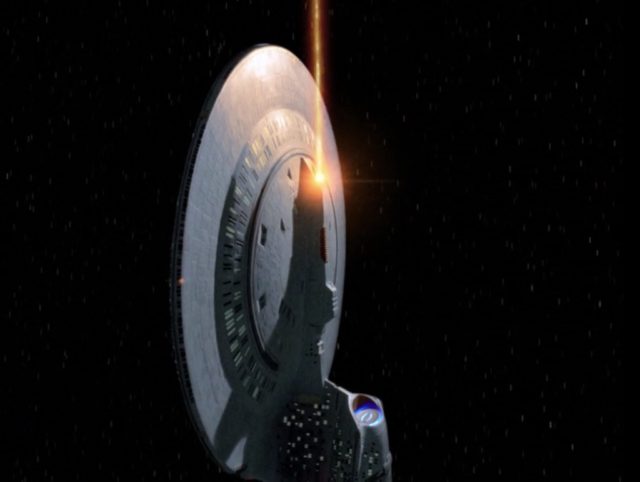
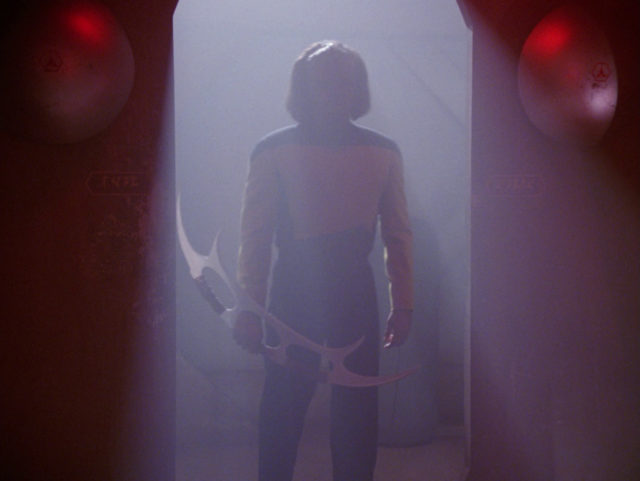
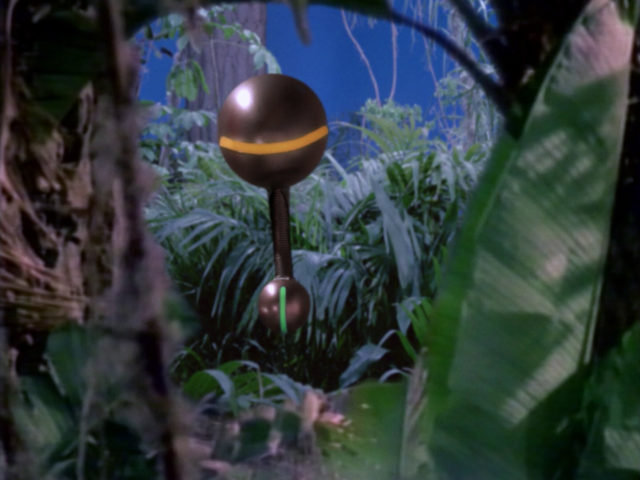
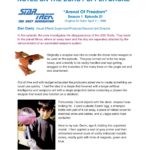
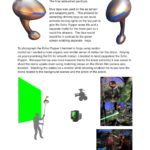

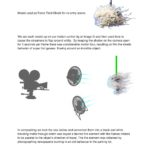
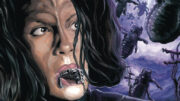
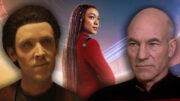
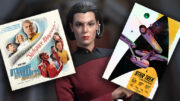
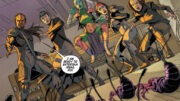
I can certainly understand the urge and need to downsize… just did it myself recently. I’m sure his invaluables will find loving new homes! Great interview.
Giving serious consideration to picking up the screen-used TNG Conspiracy parasites- a steal at only $1,100 … 2 days left.
What a great career this guy had. Noteworthy, and something he was passionate about. That’s a rare and special thing (I say from my boring desk at work…Zzzzz).
$50,000 for the sword of kahless. Good for him!
I snagged some of the Xindi and Targ concept art, one of which was already framed. So delighted to have a bit of his brilliant work in my home.